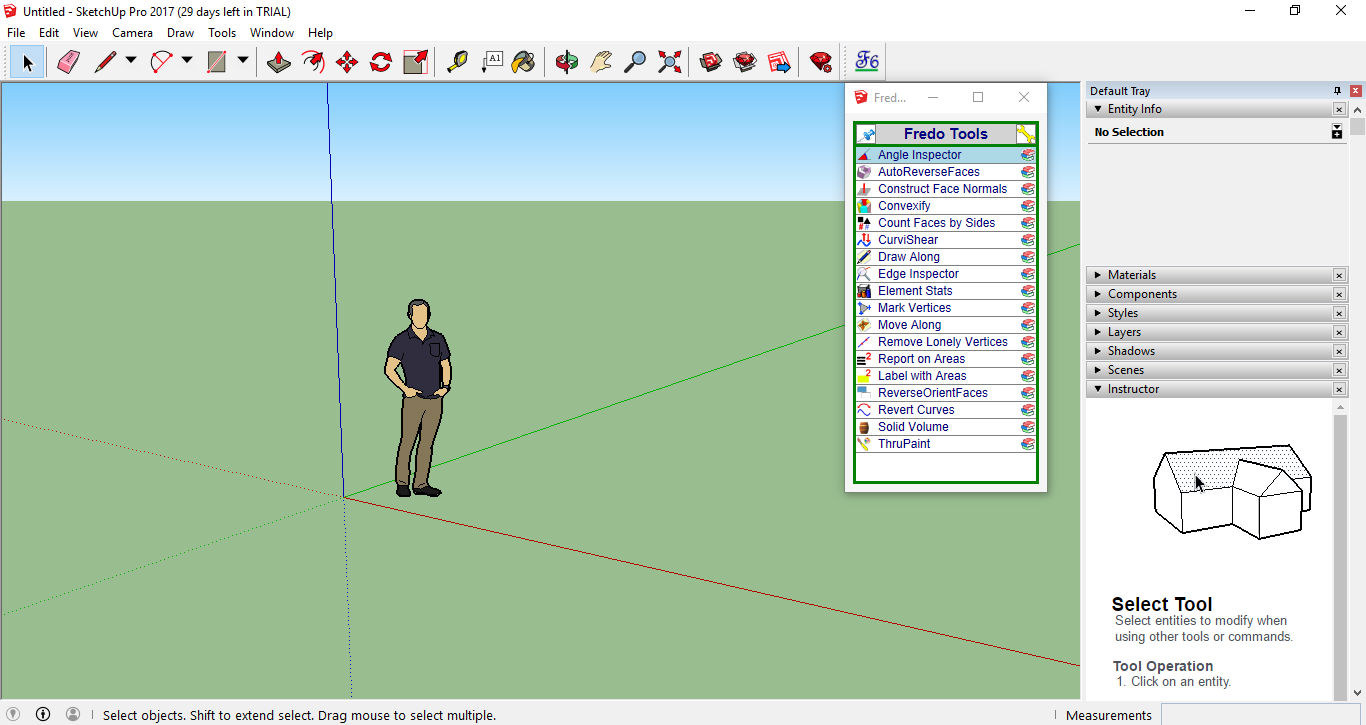

As discussed in the first video, the way we create our plan images in Layout is by creating scenes that show the visibilities you’d like to see. The other thing I want to talk about in this video really quick is organizing your scenes. For example, if you modeled a wood base or a wood trim piece, you’d probably want to put that on a “ARCH – Wood Trim” layer so you can turn it off whenever you’d like. I’d specifically suggest creating layers for any detailing you create that might make it difficult to pull dimension lines, etc. You can do this same thing basically for any kind of geometry you’d like. That way, if we want to, we can toggle the swings on and off as we desire. We’ll put the group with the door swings on its own layer for each door. Within that group, each individual door will be its own group that contains two objects – the door geometry and the door swings. In this case, what we do, is first of all, we have all our different doors in a group. At the moment, SketchUp doesn’t really have a great way to create door swing indicators in your models, so often you’re going to end up drawing those in manually, but you’re also going to want to be able to hide those – you don’t want door swings showing up if you use your model for a 3D rendering, for example. I’ve going to use door swings as an example. Levels – Used for breaking your model up into different floors.Conceptual Items – things like door swings, which are used for 2D plans, but not necessarily for 3D.

Objects – Actual Geometry in your model.Generally speaking, you break your layers up into 3 types – You create your geometry in groups, then put those groups onto different layers so that you can adjust them as necessary. Generally speaking though, they all share the same basic concepts – you organize your model with groups and components, then you control visibilities using layers. The idea here is that you set your visibilities up so when you make changes in your model, your images in Layout adjust automatically, so you don’t have to go in and re-create all your different views.Įveryone seems to develop their own system for doing this – Matt Donley has a system that he uses in the book SketchUp to Layout (Affiliate Link), and Michael Brightman also has a system that he details in “ The SketchUp Workflow for Architects.” One of the keys to creating models that you’re going to import into Layout is planning ahead and grouping your model accordingly. I’m going to build on some of the concepts from that video, so you may want to start with that one. In this video, I’d like to talk a bit more about organizing your model so that it can be imported into Layout to create various different plans. That video was an introduction to creating architectural plans using SketchUp and Layout. Organizing Your SketchUp Model for Layout – The SketchUp Essentials #49Ī couple weeks ago, I posted a video that was an introduction to the use of Layout for creating architectural drawings.


 0 kommentar(er)
0 kommentar(er)
